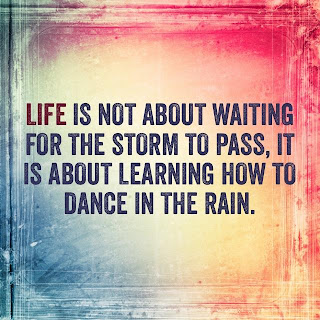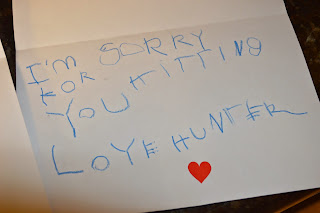Dancing in the rain
Our pediatric Neuroimmunology follow-up appointment was scheduled for Monday at 12:30. Dr. G will go through all of the lab work completed at the Mayo clinic over the past two weeks. According to the nurse, all of the regular patterned diseases were negative- she wasn't sure about the conversations Dr. G had with the staff at Mayo.
As we anxiously await to hear the findings, as well as his potential course of treatment, we are continuing to deal with difficult behavior. Hitting, slamming doors, "no fair" have been consistent when he is asked to transition or to complete a non-preferred task. His district teacher today stopped me to tell me that this has been his hardest week to date.
Here are a few notes/graphs from our IOP therapist that she sent to Dr. G.:
This first graph reflects the number of behavior “episodes” that occur in a session and have been tracked since his enrollment. An episode is defined as once the inappropriate behavior starts (for Hunter this is defined as hitting, kicking, clothes removal, property destruction, or verbal refusal) and concludes once he regains control and willing participates in therapy. As you can see, it has not stabilized.
I wanted to look more closely at the number of actual behaviors that were occurring within the episodes, but have only started collecting this data since 5/01/2013 and will continue until his enrollment ends. I feel this data gives a clearer picture in the number of behaviors we are dealing with in a session. Keep in mind each data point represents 3 hours of therapy and we only see him 2x/week; thus he is averaging 70 behaviors per session. They are seeing these behaviors across all his environments with hitting and kicking being the worst.
In addition to our inability to stabilize his behavior, I am also perplexed by general responding outside of behavior episodes. When we have patients engaging in these high rates of behavior they are not usually progressing in other areas of treatment primarily due to the fact they are engaged in behavior for a large part of the session. As you can see from this graph, Hunter is actually requiring very little direction from staff to stay engaged with peers and materials (again-if not engaged in a behavior). So essentially, when he is not engaged in a behavior he is doing quite well, but his behaviors are occurring at high rates, typically not for long periods of time-they are more like ‘fits of rage’ and then he joins back in.
We are also collecting data on his self-stimulatory behavior of hand flapping and perseverative question asking, but they are fairly stable. Please let me know if you have any questions.
If you look at the first graph, you will see that around session 5, his behavior dramatically changed (that was the strep infection). You also can see that there were NO behavioral outbursts when he first started the program. And as his antibiotic kicked in, the behaviors began to decline.
But for some unknown reason, they started to rise again, and like Carrie said, have not stabilized.
These charts are so hard for me to look at. I have asked myself time and time again- did we make a mistake placing him in this program?? He was doing so well, and I thought this was the last program to check off the list. And we have only gone backwards.
We have done everything possible to stabilize him ourselves- took him out of a stressful preschool program, reduced his in-home hours, attempted to place less demands on him (within reason)- and we are still in this regression.
The picture at the top of this post is perfect...we are, and have been, in this storm, a perfect storm that encompassed infection, genetics for autoimmune disorders, and other not-for-certain circumstances that changed our lives forever. We are hoping that this recent storm does pass...
but as it states, we need to dance in the rain.
Let's hope Dr. G has his dancing shoes on Monday afternoon and has an answer to calming the storm.



Comments
Post a Comment